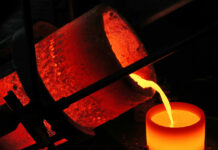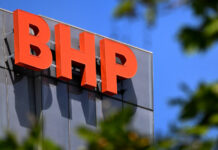
HEAVY rain in the first quarter and a lower iron ore price weighed heavily on Kumba Iron Ore which guided to lower year-on-year earnings for the first half of its 2022 financial year.
Headline earnings for the 12 months will be between R10.9bn and R12bn representing a 48% to 53% year-on-year decrease.
Coupled with an expected 40% to 50% decline in headline earnings for Anglo American Platinum (Amplats) as per its trading statement, the first reporting period for newly appointed Anglo American CEO, Duncan Wanblad, is likely to be a subdued affair. Anglo owns 70% and 80% of Kumba and Amplats respectively.
Wanblad took over the reins of Anglo American in April from Mark Cutifani, CEO of the group for nine years of which the back-end proved highly successful owing to a sweeping overhaul of Anglo’s mining and culture practices, assisted by record commodity prices.
Kumba said its Kolomela mine, situated in the Northern Cape province, was unable to recover sufficiently well from heavy rains in the first quarter. The Sishen mine, Kumba’s flagship operation, fared better as it had received half the rainfall. The two mines are about 150km apart.
Kolomela was subsequently hampered by low truck availability due to saturated pit conditions. It also implemented “a safety intervention” in the second quarter without giving details of why it was necessary. As a result, Kolomela’s waste stripping – removing non-economic ore – reduced by 20% compared to the first quarter.
Kumba said it had implemented a “rain readiness plan”, mobilised additional contractors and optimised its mine plan in order to improve the haulage cycle which would help with a second half recovery. The damage was done on Kolomela’s unit costs, however, which would be as much as 15% higher year-on-year when comparing the lower end of previous guidance (R380/t) to the high-end of new guidance of R440/t.
Unit cost guidance for Sishen was unchanged at R500 to R530/t.
Iron ore production fell 13% to 17.8 million tons (Mt) but Kumba maintained full year production guidance of 38Mt to 40Mt. It also increased export sales 2% to 19.7Mt during the six months by running down on-mine stocks which stood at 4.5Mt as of June 30 compared to 6.2Mt at the close of the financial year in December.
Kumba disclosed little information regarding the performance of Transnet Freight Rail, a unit of the government-owned Transnet, a logistics and freight company.
The iron ore line runs better efficiencies that TFR’s coal line – which has been criticised for its shambolic performance. Kumba said ore railed to port fell 4% to 19Mt despite an 8% improvement in the second quarter.
Amplats said its lower year-on-year earnings was due to the normalised of sales flows (refined sales down a fifth) as the company depleted inventories that had built up whilst its was repairing one of its processing plants. The average price for platinum, palladium and rhoidum was 14% weaker.
Commenting in Anglo’s production report, Wanblad said today that after a slow start the group’s production performance had “started to pick up” in the second quarter. He anticipated “a stronger second half” for the 2022 financial year. Overall, Anglo’s production was 9% lower year-on-year owing to lower grades and availability in copper and planned maintenance at the group’s Minas Rio mine in Brazil cited as examples.
Production fell in the diamonds business, owned by De Beers (-4%), while output was also lower at copper (-21%), iron ore (-8%) and metallurgical coal (-12%). However, production guidance at De Beers was raised to 32 to 34 million carats for the year.
Another bright spot was first production from Quellaveco, Anglo’s new copper mine in Peru which Wanblad said would add 10% to global output once it was at full belt.










